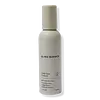What's inside
What's inside
 Key Ingredients
Key Ingredients

 Benefits
Benefits

 Concerns
Concerns

 Ingredients Side-by-side
Ingredients Side-by-side

Water
Skin ConditioningIsopentyldiol
HumectantSodium Lauroyl Methyl Isethionate
CleansingSodium Cocoamphoacetate
CleansingCocamidopropyl Hydroxysultaine
CleansingPhenoxyethanol
PreservativeGlycerin
HumectantOlea Europaea Fruit Oil
MaskingCitric Acid
BufferingMoringa Oleifera Seed Extract
Skin ConditioningCitrus Aurantium Dulcis Peel Oil
MaskingSodium Benzoate
MaskingCitrus Aurantium Dulcis Fruit Extract
MaskingPolyquaternium-10
Trisodium Ethylenediamine Disuccinate
Ethylhexylglycerin
Skin ConditioningAcacia Concinna Fruit Extract
Skin ConditioningBalanites Aegyptiaca Fruit Extract
Disodium EDTA
Citrus Grandis Peel Oil
MaskingCitrus Aurantifolia Oil
CleansingGypsophila Paniculata Root Extract
Skin ConditioningCitrus Aurantium Bergamia Fruit Oil
MaskingCitrus Aurantium Amara Peel Oil
Skin ConditioningDisodium Phosphate
BufferingLimonene
PerfumingWater, Isopentyldiol, Sodium Lauroyl Methyl Isethionate, Sodium Cocoamphoacetate, Cocamidopropyl Hydroxysultaine, Phenoxyethanol, Glycerin, Olea Europaea Fruit Oil, Citric Acid, Moringa Oleifera Seed Extract, Citrus Aurantium Dulcis Peel Oil, Sodium Benzoate, Citrus Aurantium Dulcis Fruit Extract, Polyquaternium-10, Trisodium Ethylenediamine Disuccinate, Ethylhexylglycerin, Acacia Concinna Fruit Extract, Balanites Aegyptiaca Fruit Extract, Disodium EDTA, Citrus Grandis Peel Oil, Citrus Aurantifolia Oil, Gypsophila Paniculata Root Extract, Citrus Aurantium Bergamia Fruit Oil, Citrus Aurantium Amara Peel Oil, Disodium Phosphate, Limonene
Ingredients Explained
These ingredients are found in both products.
Ingredients higher up in an ingredient list are typically present in a larger amount.
Citric Acid is an alpha hydroxy acid (AHA) naturally found in citrus fruits like oranges, lemons, and limes.
Like other AHAs, citric acid can exfoliate skin by breaking down the bonds that hold dead skin cells together. This helps reveal smoother and brighter skin underneath.
However, this exfoliating effect only happens at high concentrations (20%) which can be hard to find in cosmetic products.
Due to this, citric acid is usually included in small amounts as a pH adjuster. This helps keep products slightly more acidic and compatible with skin's natural pH.
In skincare formulas, citric acid can:
While it can provide some skin benefits, research shows lactic acid and glycolic acid are generally more effective and less irritating exfoliants.
Most citric acid used in skincare today is made by fermenting sugars (usually from molasses). This synthetic version is identical to the natural citrus form but easier to stabilize and use in formulations.
Read more about some other popular AHA's here:
Learn more about Citric AcidCocamidopropyl Hydroxysultaine is a synthetic cleansing agent, though it is derived from coconut oil.
It is used to enhance the texture of products by boosting lather and thickening the texture. As a cleanser, Cocamidopropyl Hydroxysultaine is mild.
Disodium EDTA plays a role in making products more stable by aiding other preservatives.
It is a chelating agent, meaning it neutralizes metal ions that may be found in a product.
Disodium EDTA is a salt of edetic acid and is found to be safe in cosmetic ingredients.
Learn more about Disodium EDTAEthylhexylglycerin (we can't pronounce this either) is commonly used as a preservative and skin softener. It is derived from glyceryl.
You might see Ethylhexylglycerin often paired with other preservatives such as phenoxyethanol. Ethylhexylglycerin has been found to increase the effectiveness of these other preservatives.
Glycerin is already naturally found in your skin. It helps moisturize and protect your skin.
A study from 2016 found glycerin to be more effective as a humectant than AHAs and hyaluronic acid.
As a humectant, it helps the skin stay hydrated by pulling moisture to your skin. The low molecular weight of glycerin allows it to pull moisture into the deeper layers of your skin.
Hydrated skin improves your skin barrier; Your skin barrier helps protect against irritants and bacteria.
Glycerin has also been found to have antimicrobial and antiviral properties. Due to these properties, glycerin is often used in wound and burn treatments.
In cosmetics, glycerin is usually derived from plants such as soybean or palm. However, it can also be sourced from animals, such as tallow or animal fat.
This ingredient is organic, colorless, odorless, and non-toxic.
Glycerin is the name for this ingredient in American English. British English uses Glycerol/Glycerine.
Learn more about GlycerinPhenoxyethanol is a preservative that has germicide, antimicrobial, and aromatic properties. Studies show that phenoxyethanol can prevent microbial growth. By itself, it has a scent that is similar to that of a rose.
It's often used in formulations along with Caprylyl Glycol to preserve the shelf life of products.
Water. It's the most common cosmetic ingredient of all. You'll usually see it at the top of ingredient lists, meaning that it makes up the largest part of the product.
So why is it so popular? Water most often acts as a solvent - this means that it helps dissolve other ingredients into the formulation.
You'll also recognize water as that liquid we all need to stay alive. If you see this, drink a glass of water. Stay hydrated!
Learn more about Water